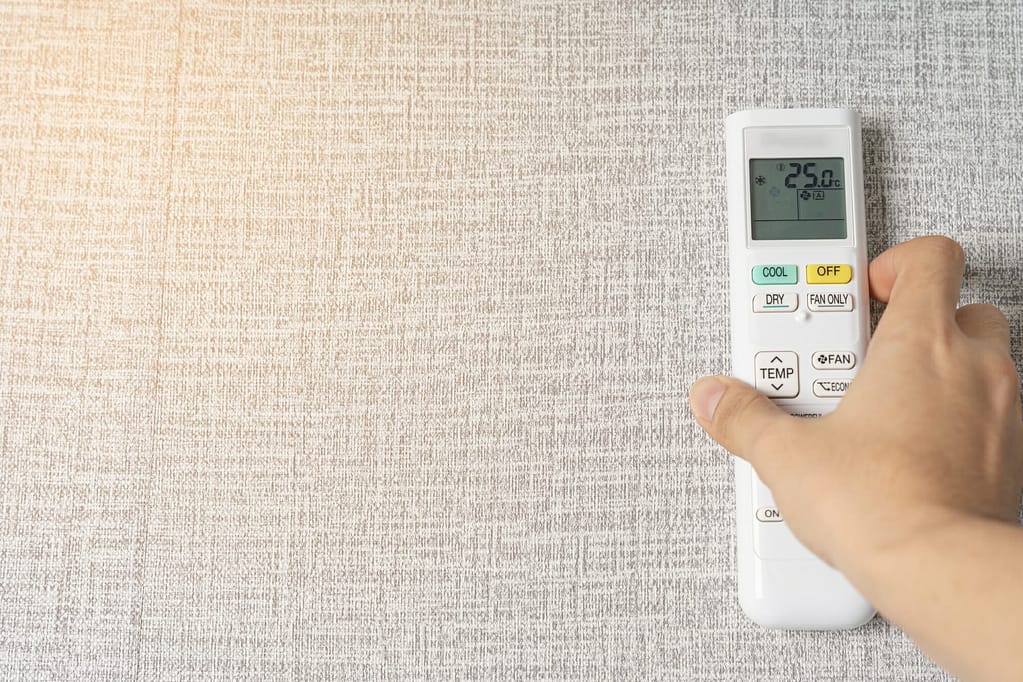- Life in Japan
How to use Air conditioners in Japan?
How to use air-conditioners in Japan?
Actually, the above title is probably misleading, how Japanese people use air-conditioners in Japan is almost certainly the same as it is in your home country. However, what do you do when you arrive in Japan, you put down the bags, and you pick up the air-con remote only to not understand what anything means? If you can read Japanese, you are fine, but let’s suppose today is a bad day, or perhaps you want to set the timer so that you can avoid being a sweaty mess when you wake up.
Let’s take a look at some of the basic functions that are on an air conditioning unit and what they mean.
Before we get started, please make sure you have placed new batteries in the air conditioner remote or that the control panel is powered on. If the control panel is not on, check the breaker box to make sure all switches are correctly flipped. In some older apartments, excessive use of electrical appliances may cause the breaker to flip and cut power in particular areas of the apartment.

運転・停止(unten teishi) ON/Off button:
This is the basic power-setting button you will press to start or stop the airconditioning unit. In some cases, both are located on the same button. In other devices, you might see the unten as a green button and the teishi as a red button.
Still, your exciting journey to ‘cool Japan’ starts here.
温度 (ondo) Temperature:
This is probably the next most exciting button. The button which controls temperature, like an ice queen from a magical world, you too have the power to create a world of ice or a humid desert. What an exciting time to be alive! The ondo wording is usually located in between an arrow for up, and an indicator for down.
風向き(kazamuki) airflow:
This controls the direction that you wish the air to blow out of the machine. Perhaps you are enjoying being chilled, but alas, now you are too chilled. However, you don’t want to turn off the device. You just want to be less cool, and you are also proud to change the temperature. Well, good news, you can change the vent, so it aims just a little bit higher, so you are just a little bit warmer.
Note: Some new machines may have Kazamuki set to 自動(Jidou) automatic. In this case, it will try to aim towards heat sources by default.
運転切換(untenkirikae) mode change:
You have set the air conditioner to a respectful 25 degrees, and you are not feeling any more refreshing you feel warmer than before. What has happened? It could be that your air-conditioner unit is set to a different mode. In most air-conditioners, there are several modes including (自動 jidou – automatic、冷房 reibou – cool、暖房danbou-heat、送風 soufuu-air/dry、除湿 Joshitsu – dehumidify)
You can also change the intensity of the output of the air-conditioner unit by looking for the word
風量切換(Fuuryoukirikae) airspeed.
This word is usually located also between an upwards arrow and a downwards arrow. If it is not, you may need to select this button and then use the same indicators that change the temperature.
タイマーtimer:
You can set the air conditioner to turn on and off at certain times, to do this, you will need to place your timer. This is great as you can wake up nice and fresh.
入・切 on/off button:
You can use this to turn the timer on and off. In some air-conditioner units, you will need to change the mode. This can often be done under untenkirikae. In other devices, there will likely be a timer button.

Effective ways to use air conditioning.
Japanese summers are quite hot, and having an airconditioning unit will make your living accommodation much more comfortable regardless of where in Japan you are living. However, the constant use of an air conditioner is not great for your health, and can also be expensive. That is why we are also adding three things you can do in addition to using an air conditioner that will help keep your rooms fresh.
Are you using fans in your apartment?
Japan has a long history of fans, from the humble uchiwa or stylish sensu to classic standing fans, which are an iconic countryside summer image in Japan. Having fans in your apartment or house can significantly help to keep the room cool and take off stress from the Air conditioner. They also allow for better energy efficiency, which means a more gentle electricity bill for you. If you are lucky to have a ceiling fan, make sure that you set the fan to circle counter-clockwise to promote better airflow.
If you are interested in buying a fan, you can find them at most sizable digital appliance stores like Yamada Denki or BIC Camera. Even some furniture stores like Nitori seem to stock them also. If you are living regionally, do not worry as these companies can deliver nationally.
If you want to buy a fan but are not too excited about paying a full price, mainly if you are not staying here for long, you may want to check out a recycle shop as second-hand fans can frequently be found in such places. Note – They may disappear quickly in the middle of summer.
Is the temperature you are selecting too low.
It may surprise you to know that the human body is quite capable of becoming acclimatized to hot and cold weather relatively quickly (usually one to two weeks). As a result, it may be tempting for some people to drop the air conditioner setting to lower temperatures, but this is actually just going to cost you more money in an electricity bill and also not allow for you to become more acclimatized outside your apartment. Of course, how you use the air conditioner is entirely up to you. Yet, in most Japanese work environments, the average temperature of a room under the cool biz guidelines is likely to be around 25 ~27 degrees celsius, so you may struggle.
Shutting blinds or creating a green curtain
In our previous article about Cool biz, we mentioned the benefits of creating a green curtain. This is a type of plant that can grow to cover your window creating a natural cooling blind.
In conclusion
Using an air conditioner is not that hard even if it is printed in Japanese. It could probably be said to be a right of passage to surviving a Japanese summer. We hope this article helps teach you how to use an air conditioners in Japan.
Interested in living and working in Japan? Check out ALT jobs with Interac here.


